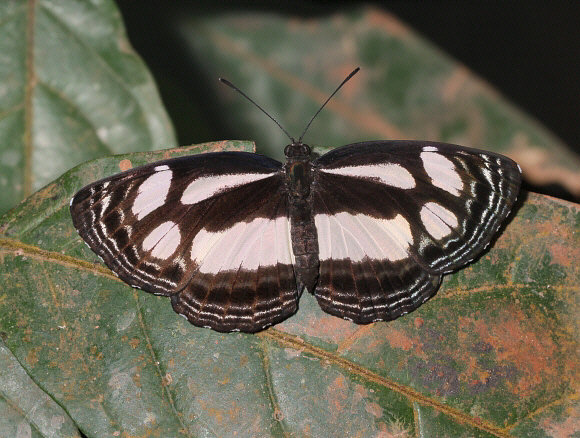
Introduction
The Sailors, or Gliders as they are sometimes called, are all members of the genus Neptis – a large and confusing group of butterflies found across much of the world, excluding the Americas. They are noted for characteristic sailing flight, and their shared theme of white spots and bars on a black background.
The genus Neptis comprises of about 170 species, of which at least 65 occur in Africa, 40+ in the Palaearctic region (Europe, and Asia north of the Himalayas), 6 in Australasia, and about 50 in the Oriental region. Distinguishing the species involves careful study of the configuration of the white spots, bars and submarginal lines on both wing surfaces.
Neptis nicoteles is distributed from Sierra Leone to Uganda and western Tanzania.
Habitats
This species is found in rainforest, including secondary forest.
Lifecycle
In Neptis species the egg is placed at the very tip of a leaf of the foodplant, on the upper surface. It is pale green, globular, and covered in a network of hexagonal ridges from which arise 100 or more tiny spikes, giving it the appearance of a tiny sea urchin. The caterpillar spends it’s early instars hiding in a curled up dead leaf from which it will periodically venture out to feed.
The only recorded larval foodplant is Milletia (Fabaceae).
Adult behaviour
Like all Neptis species, this butterfly is best appreciated when on the wing, as it sails gently, riding on thermals, with periods of gliding punctuated by occasional sharp wing beats. The Sailors fly with meticulous precision, gliding in circles as they weave their way in and out through the foliage and branches.
Both sexes periodically alight to bask on the foliage of trees and bushes, or on the ground. Males sometimes imbibe moisture from damp ground.
